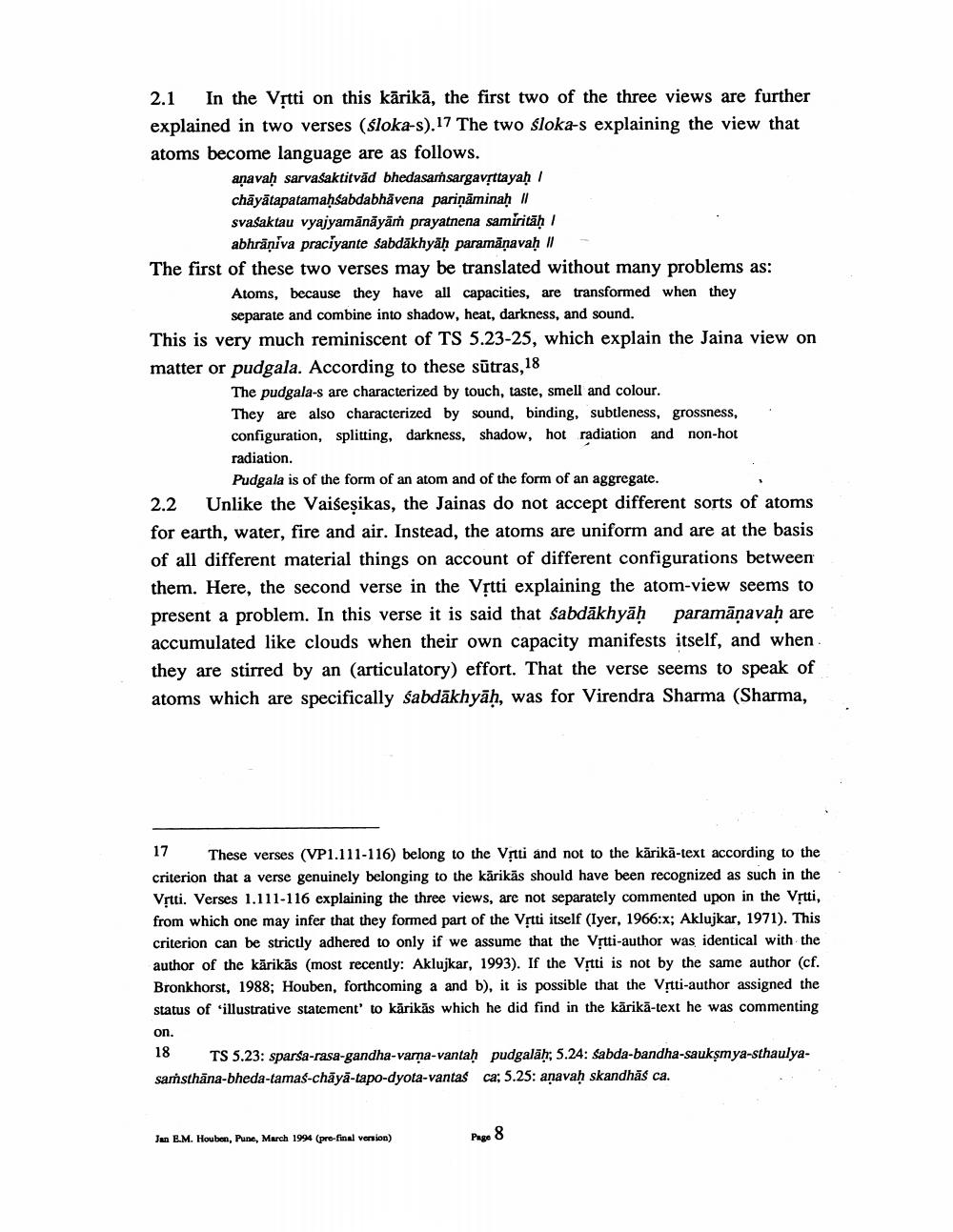________________
2.1 In the Vștti on this kārikā, the first two of the three views are further explained in two verses (sloka-s).17 The two sloka-s explaining the view that atoms become language are as follows.
anavah sarvasaktitvād bhedasarhsargavrttayah chāyātapatamansabdabhävena pariņāminah II svasaktau vyajyamānāyāṁ prayatnena samiritāḥ /
abhrāņiva praciyante sabdākhyāḥ paramānavaḥ II The first of these two verses may be translated without many problems as:
Atoms, because they have all capacities, are transformed when they
separate and combine into shadow, heat, darkness, and sound. This is very much reminiscent of TS 5.23-25, which explain the Jaina view on matter or pudgala. According to these sūtras, 18
The pudgala-s are characterized by touch, taste, smell and colour. They are also characterized by sound, binding, subtleness, grossness, configuration, splitting, darkness, shadow, hot radiation and non-hot radiation.
Pudgala is of the form of an atom and of the form of an aggregate. 2.2 Unlike the Vaiseșikas, the Jainas do not accept different sorts of atoms for earth, water, fire and air. Instead, the atoms are uniform and are at the basis of all different material things on account of different configurations between them. Here, the second verse in the VȚtti explaining the atom-view seems to present a problem. In this verse it is said that Sabdākhyāḥ paramāṇavaḥ are accumulated like clouds when their own capacity manifests itself, and when they are stirred by an (articulatory) effort. That the verse seems to speak of atoms which are specifically sabdākhyāḥ, was for Virendra Sharma (Sharma,
17 These verses (VP1.111-116) belong to the Vņtti and not to the kārikā-text according to the criterion that a verse genuinely belonging to the kārikās should have been recognized as such in the Vrtti. Verses 1.111-116 explaining the three views, are not separately commented upon in the Vrtti, from which one may infer that they formed part of the Vrtti itself (Iyer, 1966:x; Aklujkar, 1971). This criterion can be strictly adhered to only if we assume that the Vrtti-author was identical with the author of the kärikās (most recently: Aklujkar, 1993). If the Vịtti is not by the same author (cf. Bronkhorst, 1988; Houben, forthcoming a and b), it is possible that the Vrtti-author assigned the status of 'illustrative statement' to kārikās which he did find in the kärikā-text he was commenting on. 18 TS 5.23: sparsa-rasa-gandha-varna-vantah pudgalāh; 5.24: sabda-bandha-saukṣmya-sthaulyasasthāna-bheda-tamas-chāyā-tapo-dyota-vantas ca; 5.25: anavaḥ skandhās ca.
Jan E.M. Houben, Pune, March 1994 (pre-final version)
Page 8




